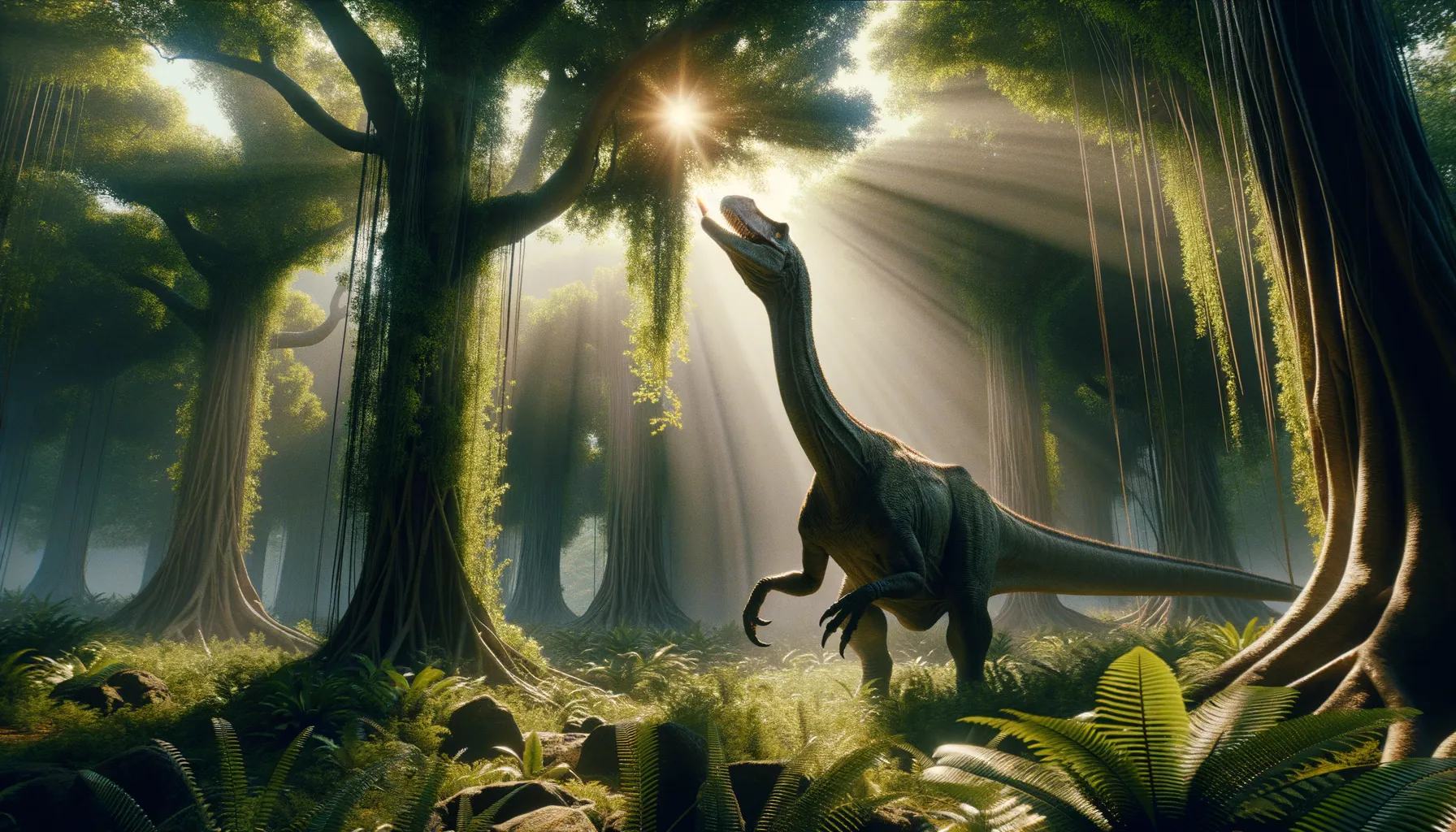
Sphenospondylus
Long-necked giant of the prehistoric era.
Period
Jurassic
Length
Length could reach up to 10 meters.
Height
Estimated to be about 3 meters tall.
Weight
Weighed around 3 to 4 tons.
Sphenospondylus was a large, long-necked herbivorous dinosaur from the Jurassic period. Known for its impressive size, this sauropod roamed ancient landscapes, feeding on a variety of vegetation. Its massive body structure and long tail provided balance, while the elongated neck allowed it to reach high into the trees for leaves. Despite its formidable appearance, it was a plant-eater, coexisting with other herbivorous sauropods and evading prehistoric predators.
Diet
Sphenospondylus had a herbivorous diet, primarily feeding on leaves, ferns, and other soft vegetation. Its long neck enabled it to graze from taller trees and shrubs that ground-dwelling dinosaurs couldn't reach.
Hunting
Sphenospondylus did not hunt, as it was an herbivore. Instead, it foraged for plants, using its height to reach food sources that were inaccessible to other herbivores.
Environmental challenges
The primary environmental challenge for Sphenospondylus was finding sufficient food, as it needed vast quantities to sustain its massive body. Additionally, it had to avoid predators despite its size, by staying within groups and using its size as a deterrent. Droughts and changing climates could also threaten its food sources, requiring migration to more fertile areas.
Speed
Relatively slow-moving due to its large size.
Lifespan
Estimated to live for several decades.
First discovery
Unearthed during the early 20th century in Europe.
Fun Facts
- Sphenospondylus was a dinosaur that lived during the late Jurassic period, which was around 150 million years ago.
- Its name 'Sphenospondylus' means 'wedge vertebrae', which refers to the unique shape of its vertebrae.
- This dinosaur is known mostly from fossil fragments, making it a bit of a puzzle for paleontologists to study.
- Sphenospondylus was a close relative of the more famous Stegosaurus, and it's believed to have had some similar features like bony plates.
- The discovery of Sphenospondylus fossils helps scientists understand the diversity of dinosaur species that lived in Europe during the Jurassic era.
- While not much is known about its size, it is thought that Sphenospondylus was a herbivore, peacefully browsing for plants.
- Fossil evidence suggests that Sphenospondylus lived in areas that are now part of England, showing the wide range of distribution of dinosaurs in ancient times.
Growth and Development
Sphenospondylus grew rapidly during its early years, reaching near-adult size within a decade. Like other sauropods, it likely had a continuous growth pattern throughout its life. Juveniles probably required special care, staying under the protection of adults from potential predators until they were large enough to defend themselves.
Habitat
Sphenospondylus inhabited lush, forested areas with ample vegetation to support its herbivorous diet. It thrived in regions with warm climates and abundant plant life, including ferns and coniferous trees. These environments provided both food and some protection from predators.
Interaction with other species
Sphenospondylus likely coexisted with other herbivorous dinosaurs, sharing feeding grounds peacefully due to their similar diets. It had to remain vigilant for predators, such as large theropods, which could threaten juveniles or isolated individuals. Its sheer size meant that adult Sphenospondylus had few natural enemies.
Natural lifespan
The natural lifespan of Sphenospondylus was likely several decades, similar to modern large mammals.
Reproduction
Reproduction was likely through laying eggs in clutches, similar to other sauropods. These nests were probably built in safe areas, away from predators and environmental hazards. Parental care may have included guarding the nest and helping newly hatched juveniles until they could fend for themselves.
Social behaviour
Sphenospondylus was likely social, moving in herds to enhance protection against predators. Group living provided safety in numbers and facilitated finding and sharing food resources. Communication among individuals could have included vocal sounds, visual signals, or physical gestures to maintain group cohesion.
Fossil locations
Fossils of Sphenospondylus have primarily been found in Europe, offering key insights into its distribution during the Jurassic period. The discovery of these fossils provides evidence of its presence in diverse prehistoric ecosystems. This information helps paleontologists understand the migratory patterns and geographic range of sauropods during that era.
